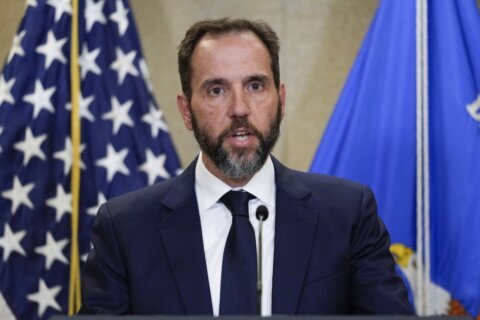Prepare for rising rates.
The Federal Reserve raised interest rates five times in 2022, most recently raising rates 0.75% in September. Continued rate increases are expected as the Fed aims to cool inflation, which currently sits near its highest levels since the 1980s. This aggressive rate raising strategy can take a toll on many aspects of consumer life, possibly for years to come. To protect your money, learn more about what to watch when interest rates go up.
Variable loan costs rise.
Borrowers holding a variable prime rate loan, also known as an adjustable rate loan, will see their payment amounts rise as interest rates rise. Unlike a fixed rate loan, the cost of a variable loan can climb quickly. “The long term effects can be really huge,” says Matt Schulz, chief credit analyst at LendingTree. “We’re talking about thousands and thousands of dollars paid in mortgage interest, personal loan interest and auto loan interest, and all of that adds up.” When interest rates are poised to rise, it may be wise to convert a variable loan into a fixed loan or pay off the variable loan as soon as possible.
Bond markets fall.
Bond markets tend to fall as interest rates rise. In May, Fed Chair Jerome Powell announced that the central bank would reduce its $9 trillion stockpile of Treasury bonds and mortgage-backed securities starting in June to further reduce market liquidity. However, short-term and long-term U.S. Treasury bond yields are currently up year over year and month over month. Individuals may wish to adjust their investment strategies accordingly.
CD returns rise.
Certificates of deposit, or CDs, can offer better annual percentage yields when interest rates rise and be attractive to new investors. However, those holding an existing long-term CD at a lower rate may want to consider withdrawing funds early, after considering the penalty costs, when interest rates rise significantly. “For those who already have CDs who may be comparing their old CD rates to the newly increased CD rates, they may feel they are missing out,” says Simon Zhen, chief research analyst at MyBankTracker.com. “One tip I have is called laddering, a strategy some people use so they’re not so tempted to jump around when interest rates change and every year you are taking advantage of the highest CDs at that point in time and diversifying your CDs.”
Savings account returns rise.
Banks are often inclined to raise rates of return on savings accounts when interest rates rise, but this isn’t always the case. “Bank balance sheets and total deposits have bloomed to more than they know what to do with,” Zhen says, citing pandemic-era stimulus payments. “While Fed interest rates may be increasing, banks might not have that same level of urgency to increase savings account rates alongside them.” The average annual yield on a standard savings account is 0.16% as of October.
Money market account returns rise.
Like savings accounts, money market funds can see a greater rate of return following an interest rate hike. Typically, a money market account offers a higher rate of return than most checking or savings accounts with lower rates of return less than 1% and high-yield money market accounts at nearly 2%. These funds often invest in financial instruments such as certificates of deposit, bankers’ acceptances and repurchase agreements.
Mortgage costs may rise.
The 30-year fixed rate mortgage is based on the long-term outlook for interest rates, and prospective buyers will see their costs rise as interest rates rise. Prospective buyers can opt for a 15-year fixed rate mortgage instead, benefiting from a lower interest rate but incurring higher payments each month under the shorter loan term. The national average 30-year fixed mortgage interest rate was 6.815%, and 5.819% for 15-year fixed mortgages as of Oct. 11. Homeowners with existing fixed rate mortgages will remain untouched by rising interest rates.
Credit card debt rates rise.
When interest rates rise, banks typically charge customers more to borrow money — including those with credit card debt. The average credit card interest rate is 20.53% for new offers and 15.13% for existing accounts as of Oct. 10, according to WalletHub. Consumers holding a credit card with a variable APR will typically see rates rise as the prime rate rises. Credit card debt is often the first place consumers feel the affects of an interest rate hike, Schulz says, adding, “That’s a really significant thing, especially given that most Americans are on a tight budget and have a very thin financial margin for error.”
Your credit score may fall.
Higher interest rates can cause individuals and families holding mortgages and credit card debt to struggle as payments rise, leading to missed payments and delinquent accounts. As a result, borrowers may see their credit score fall when interest rates climb. “There’s only so long that it’s realistic for people to continue to be able to make payments as interest rates continue to rise and debt continues to rise,” Schulz says. “We haven’t seen delinquencies rise across the board in a huge way yet. They’re trending that way, but I think we’re going to see late payments increase and when that happens, then you’ll see credit scores start to decrease.”
Personal loan costs rise.
Personal loan rates are relatively low today but may soon rise as interest rates climb in the coming years. “High interest rates affect so many aspects of life,” Schulz says. “It makes it more expensive to get a car, it makes it much more expensive over time to buy a house. Even things like personal loans for debt consolidation and credit card refinancing.” Individuals anticipating the need for a personal loan to finance an upcoming large purchase may want to lock in lower rates now.
The Federal Reserve may act.
In early 2020, the Federal Reserve cut interest rates to nearly zero alongside other measures to support a faltering economy amid the coronavirus pandemic. This is an example of when and how the Fed can take action attempting to balance the economy, and keeping a close eye on the Fed can help consumers understand the nation’s economic situation and make decisions around issues like homeownership and debt management. The Fed may continue to raise interest rates into 2023, so consumers should watch this body to make plans accordingly.
What happens when interest rates rise:
— Variable loan costs rise.
— Bond markets fall.
— CD returns rise.
— Savings account returns rise.
— Money market account returns rise.
— Mortgage costs may rise.
— Credit card debt rates rise.
— Your credit score may fall.
— Personal loan costs rise.
— The Federal Reserve may act.
More from U.S. News
How to Save Enough for a Down Payment
Can You Waive an Appraisal Contingency?
How Bad Can This Bond Crash Get?
10 Things to Watch When Interest Rates Go Up originally appeared on usnews.com
Update 11/07/22: This story was published at an earlier date and has been updated with new information.







